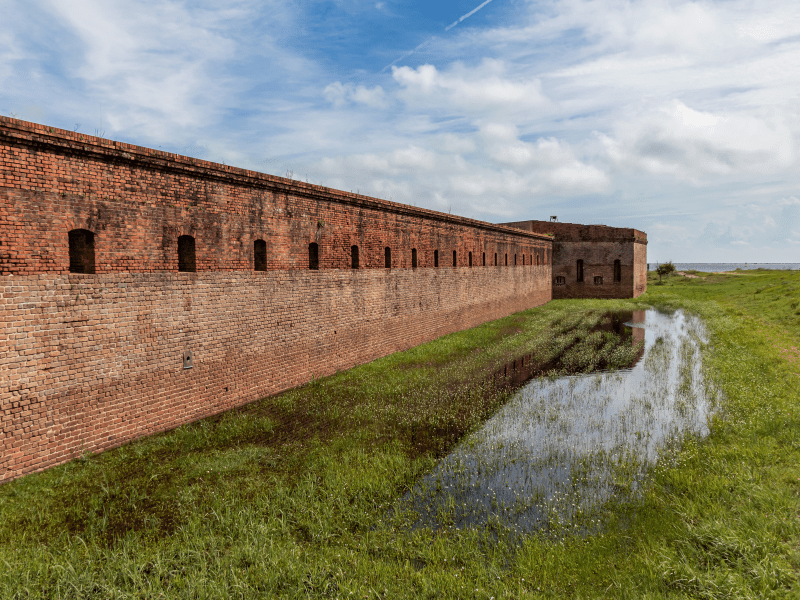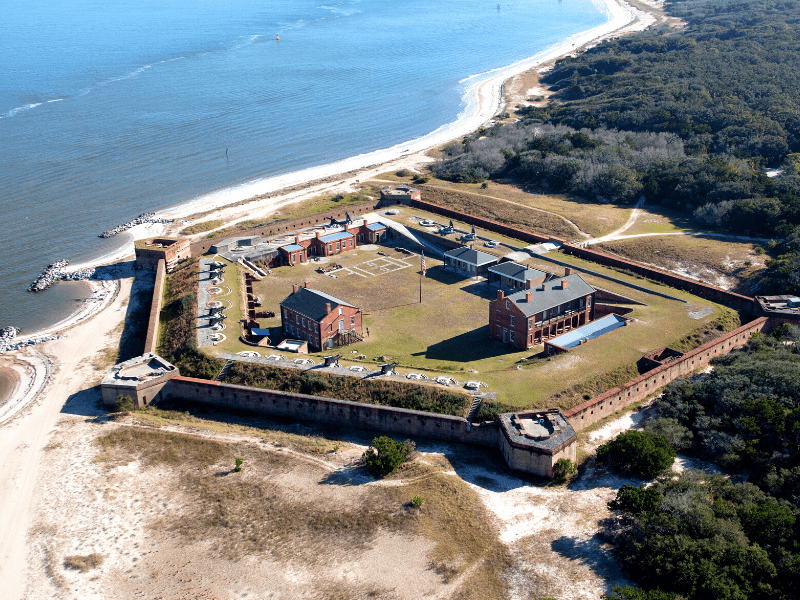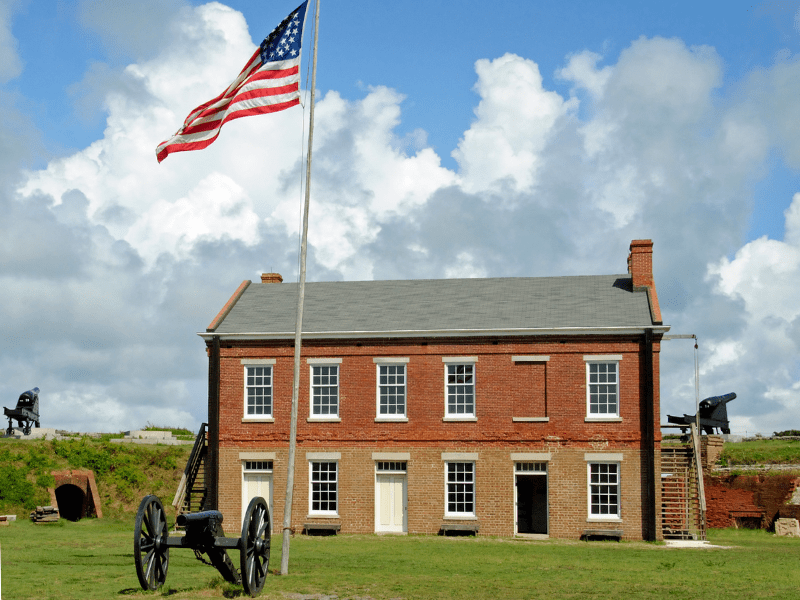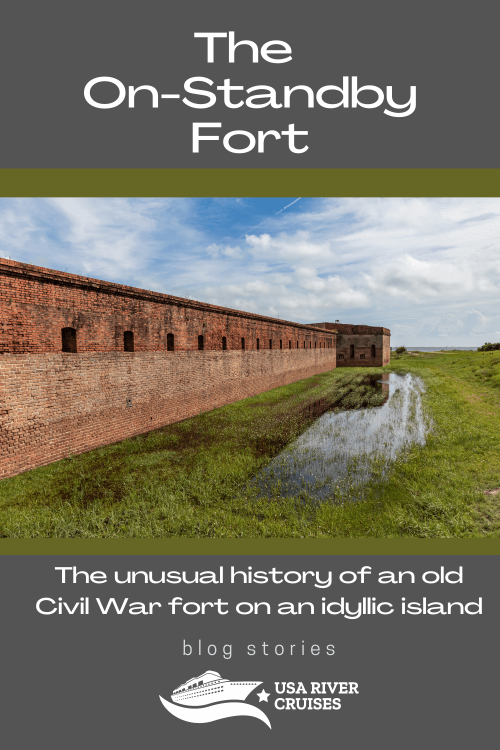
Amelia Island, Florida
The fort that was used and discarded over and over again.
Like an old tool you inherited from your grandfather’s toolbox that you don’t know if you’ll ever need it, but you hang on to it because when you need it, you really need it. In the same manner of “just in case,” Fort Clinch had been on standby – called for duty when needed, then discarded until the next call came. And the next call always seemed to come. The red brick pentagon-shaped complex sits on the edge of a barrier island off the northeast coast of Florida. Originally deemed a good site for defensive purposes, the beginnings of fortifications here were first started in 1736 by the Spanish.
Call to Duty 1
Following the War of 1812, the young country of the United States was beginning to take the need for defenses seriously. The site on Amelia Island was developed as part of a series of forts built along the eastern coastline of the United States to defend against foreign invaders. Construction on Fort Clinch began in 1847. By the time of the outbreak of the Civil War, the fort was only about two-thirds finished and had not even cannons in place. The Confederates had control of the fort up until early 1862, when Gen. Robert E. Lee ordered troops to abandon the fort, as the Union army was gaining ground off the Georgia coastline just to the north. The Union troops took possession of the now empty fort. Improvements were made to the fort while under Union control, but by the end of the war it was still not completed. It was ultimately decided that the brick masonry design made the fort obsolete as it was unable to withstand new and improved warfare technology. In 1869 the fort was left empty and under caretaker status for almost 30 years.
Call to Duty 2
In 1898, the sinking of the USS Maine sparked the Spanish-American War and the fort was called into action once again. Fortifications were made, cannons returned, a minefield laid outside the walls, and the fort was used both as an ammunition depot and barracks. Yet the Spanish-American war did not last long, and less than a year later, the fort returned to its slumber. Over 25 years it slept, slowly decaying and filling with sands blown in by passing storms.
Call to Duty 3
In 1926 the U.S. Army finally sold the complex and it stayed in private hands for several more years, furthering its decay. Local interest saved the old buildings and in 1935 the site became one of Florida’s first state parks. During the Great Depression, President Roosevelt’s “New Deal” gave the old building new life when the Civilian Conservation Corps were engaged to restore the site, improve roads, and build a museum. The site was repaired just in time for a new threat. World War II loomed, with German U-Boats trolling the eastern seaboard. Fort Clinch was called back into action for use as a joint surveillance and communications center. Following the war, it was returned to State Park status where it remains today.
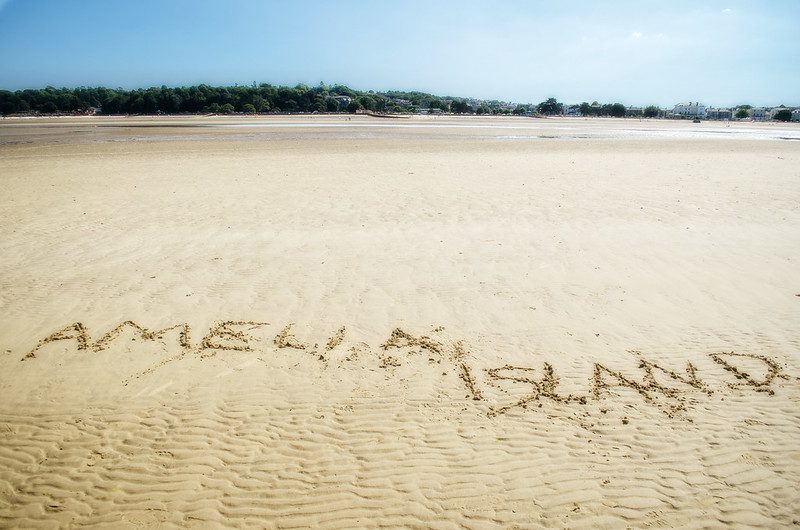
Current Call to Duty
As a State Park, it brings enrichment to the lives of all visitors, teaching valuable history lessons, in addition to being a beautiful park. The sandy beaches and marshes are a haven for birders enjoying the native wildlife. The park is a place to visit for picnics, walking the trails, biking, hiking, and beachcombing. It is a popular spot for finding shark teeth! Visitors can wander and explore the fort itself, barracks, and museum. The period most prominently on display is the Civil War era – the longest period of time in its long history during which it was an active military fort. Time your visit to catch one of several military reenactments which are held throughout the year with soldiers in full Civil War gear. The site is under constant restoration through the efforts of the Friends of Fort Clinch. Fort Clinch is at its best as a State Park, and hopefully shall remain in that capacity for generations to come, never to again be used for war.
You can visit Fort Clinch on a visit to Amelia Island on these cruises:
Historic South & Golden Isles-American Star
Charleston to Jacksonville
- 7 Nights
- Please call for information on future dates.
- From $4,425
- American Star

